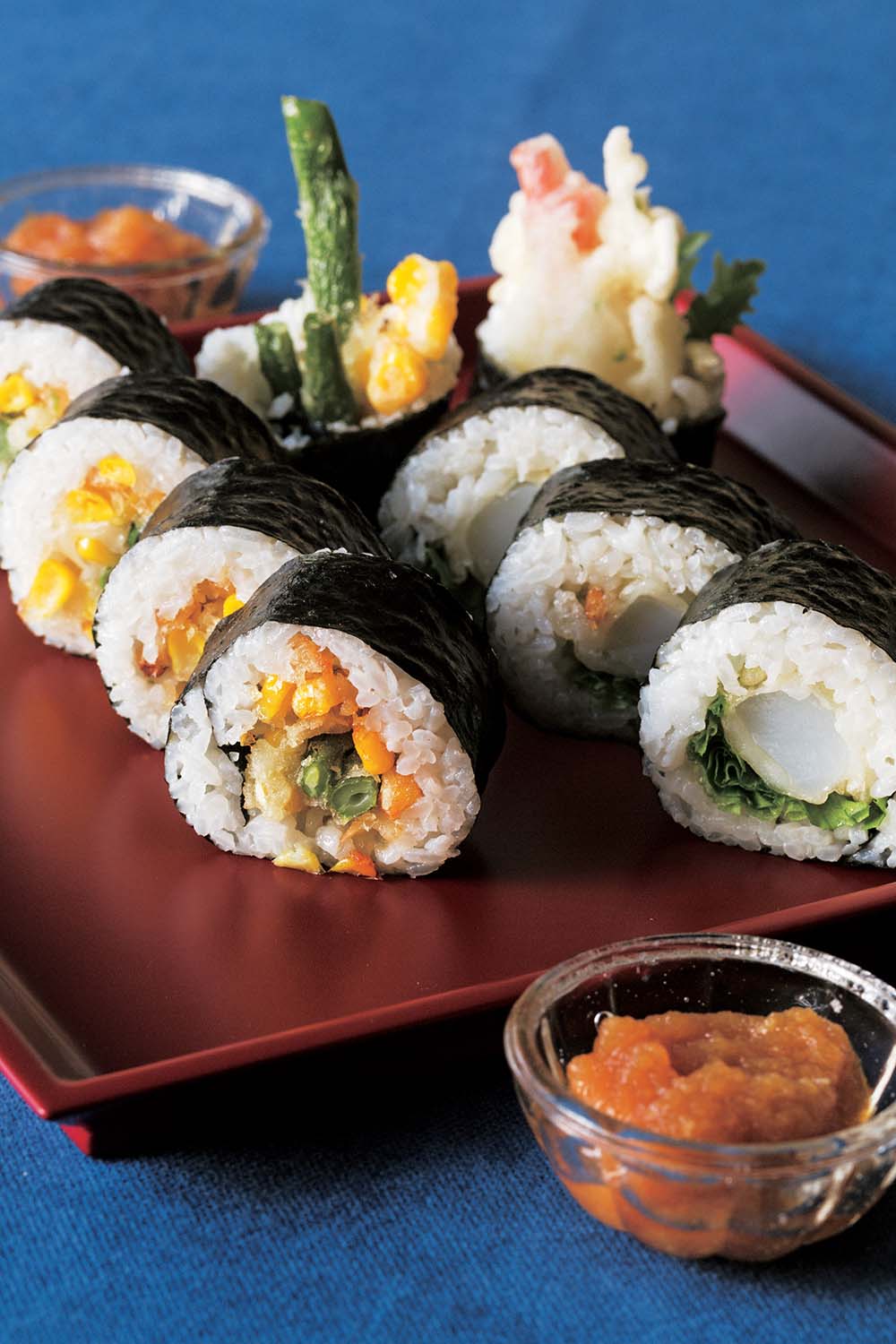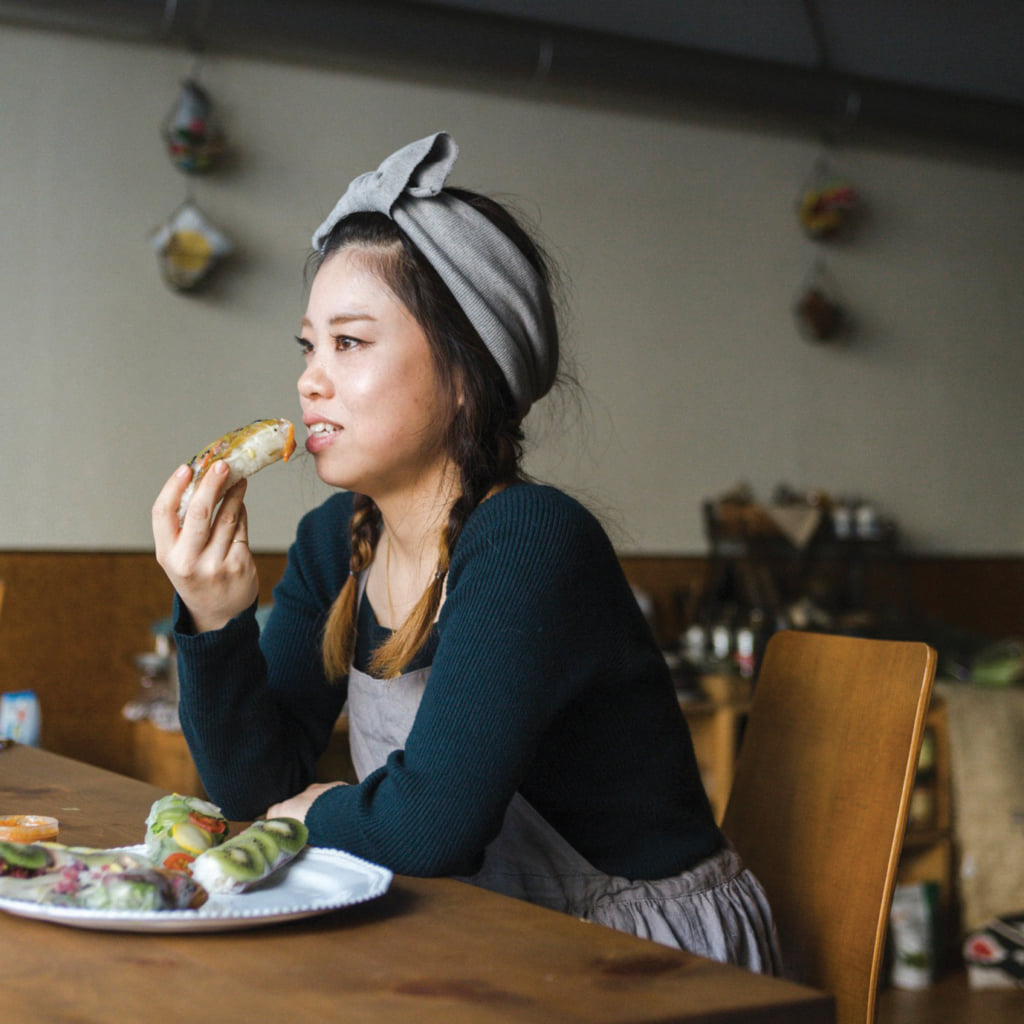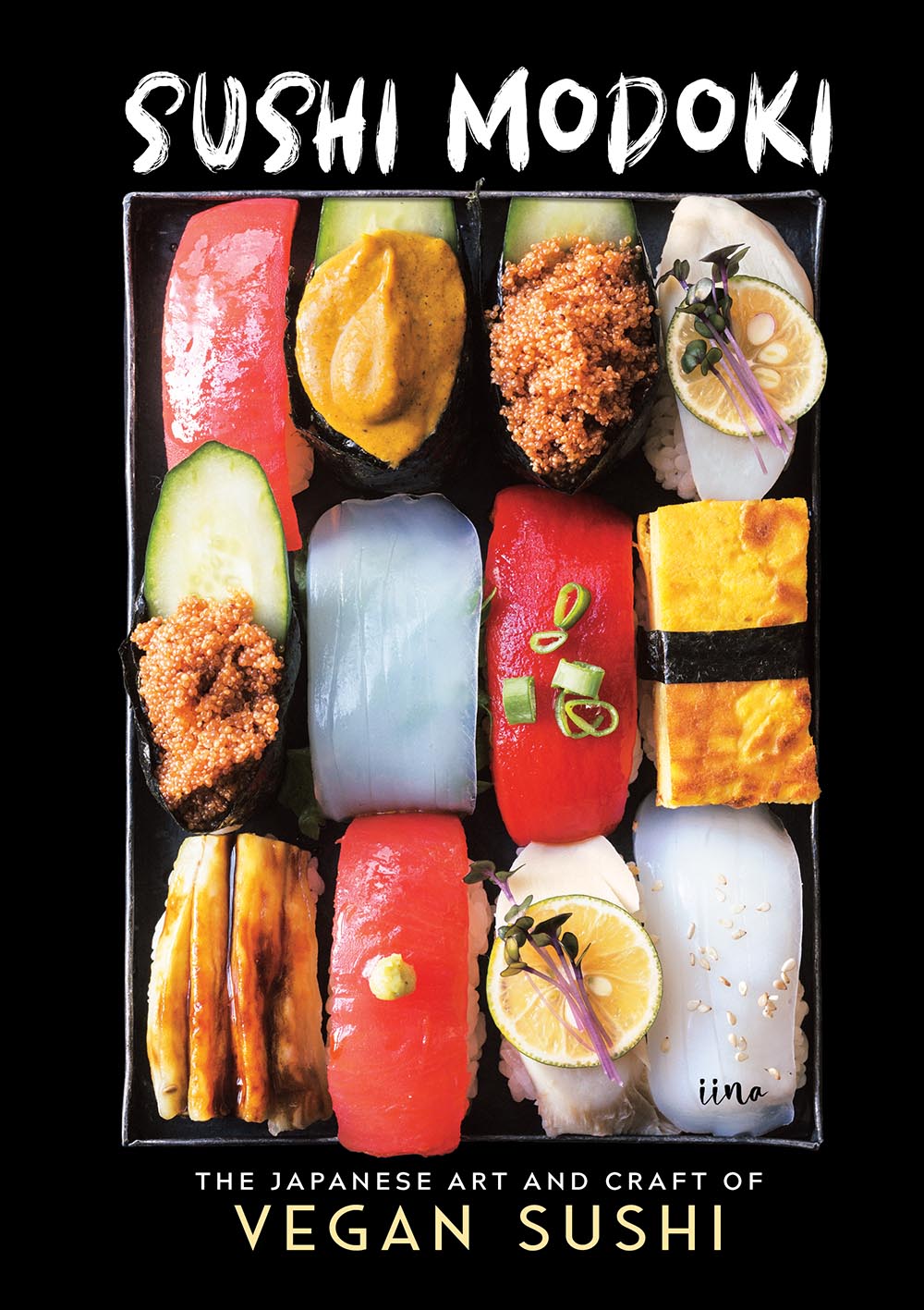Vegan Tempura Roll by iina
As a change from vegan rolls that are often filled with cucumber or raw avocado, the chef offers an alternative with fried vegetables.

© Sushi Modoki
Beyond cucumber and avocado sushi rolls, it can sometimes be difficult to find vegan maki and sushi that taste good. With this in mind, Japanese chef iina devised over fifty recipes that are entirely vegan and free from processed white sugar and artificial colours, all of which she presents in her book Sushi Modoki.
The book includes a recipe for maki filled with green-bean and corn tempura. Although tempura is considered to be representative of Japanese cuisine, it actually stems from Europe. The original recipe was imported by Portuguese Jesuit missionaries in the 16th century, before the Japanese appropriated it and modified it to make the batter lighter.
Sushi Modoki is iina’s first book. It also contains detailed ideas for salads, soups, and drinks alongside the sushi recipes.
Ingredients
Tempura batter:
50 g + 1 tablespoon all-purpose flour
80 ml ice water
½ teaspoon vinegar
¼ teaspoon salt
Veggie tempura:
80 g green beans
50 g corn kernels
1 teaspoon all-purpose flour
Canola oil
Maki:
1 nori sheet (21 × 19 cm)
150 g basic sushi rice
Daikon sauce, optional
Daikon sauce (makes 75 g):
60 g daikon
1 tablespoon vegan dashi soy sauce (see below)
1 tablespoon mirin
1 tablespoon apple cider vinegar
Vegan dashi soy sauce (makes 40 g):
400 ml soy sauce
1 piece dried kombu, 5 cm
2 dried shiitake mushrooms
Combine all the ingredients in a clean jar with a lid. Leave to rest for a week at room temperature. The sauce will keep for 6 months at room temperature.
Method
To make the tempura batter, combine all the ingredients in a medium bowl and mix well.
To make the veggie tempura, combine the green beans and corn with the flour. Pour the batter over them.
Heat as much canola oil as you would like for frying the vegetables in a pan over high heat (180°C). Add the battered vegetables and fry until golden brown.
Assemble the futomaki (see below) with the rice, using the veggie tempura as the filling. Serve with daikon sauce, if desired.
Futomaki:
Prepare vinegar water (equal parts water and rice vinegar) in a small bowl.
Place a sushi mat flat-side-up on a work surface. Place a sheet of nori coarse-side-up on top, aligning the nori and the mat.
Moisten your hands well with vinegar water. Spread 150 g sushi rice on the nori, leaving a 1-cm margin on the near side and a 1.5-cm margin on the far side.
Arrange the fillings across the sushi rice slightly below the middle. Add multiple fillings in layers.
Pick up the near side of the mat and roll it over the filling and away from you. With your left hand, pull up on the far side of the mat while holding the rolled portion of the mat to tighten the maki and continue rolling.
Set the roll aside for a couple of minutes before cutting to the desired size.
Sushi Modoki (2019), a recipe book by iina, is published by The Experiment.
Chef iina graduated from L’ecole Vantan Culinary School in Tokyo, then settled at Brown’s Field, an organic farm in the south of Chiba prefecture, where she learnt to grow and preserve organic fruit and vegetables. The young woman then became the chef at Rice Terrace Café, before moving to Tokyo and beginning her career as a vegan chef.

© Shinsaku Kato

© Sushi Modoki
TRENDING
-
A House from the Taisho Era Reveals Its Secrets
While visiting an abandoned building, Hamish Campbell discovered photographs the owner had taken of the place in the 1920s.

-
The Taboo-Breaking Erotica of Toshio Saeki
The master of the 1970s Japanese avant-garde reimagined his most iconic artworks for a limited box set with silkscreen artist Fumie Taniyama.

-
With Meisa Fujishiro, Tokyo's Nudes Stand Tall
In the series 'Sketches of Tokyo', the photographer revisits the genre by bringing it face to face with the capital's architecture.

-
Masahisa Fukase's Family Portraits
In his series ‘Family’, the photographer compiles surprising photos in which he questions death, the inescapable.

-
Hajime Sorayama's Futuristic Eroticism
The illustrator is the pioneer for a form of hyperrealism that combines sensuality and technology and depicts sexualised robots.





